The Different Types of Diamonds: What You Need to Know
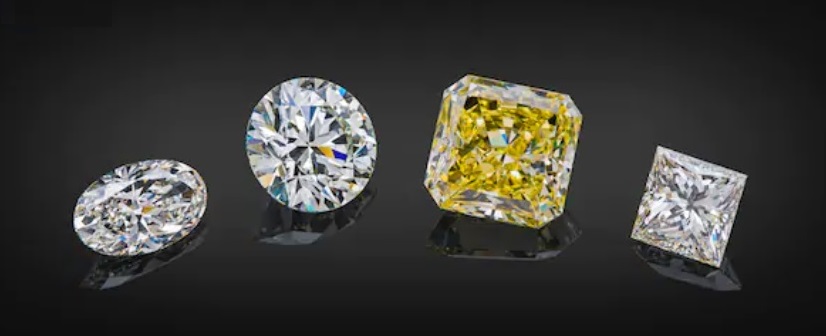
Different kinds of diamonds with different properties.
Sure, we’ve all seen diamonds before. We have walked past them in stores, seen them on rings and jewelry, and probably longed to buy one ourselves at one point or another. But do you know about the different types of diamonds in the market?
Broadly speaking, there are several classifications of diamond types that are based on their chemical/physical properties and not all are created with equal rarity. The knowledge can offer insights into the diamond’s origins and help you get a better understanding of its value.
In this write up, dive with us into the mysterious world of diamonds and find out more information about diamond types. Here are a list of topics we will cover.
Here is a list of topics we will be covering:
- First of All, What Are Diamond Type Classifications?
- Types of Diamonds – What You Need to Know
- Type Ia Diamonds
- Type Ib Diamonds
- Type 2a Diamonds
- Type Ia Diamonds
- Type 1 vs Type 2 Diamonds: Which is Better?
- Are There Any Other Different Types of Diamonds?
- A Quick Wrap Up: Different Kinds of Diamonds
First of All, What Are Diamond Type Classifications?
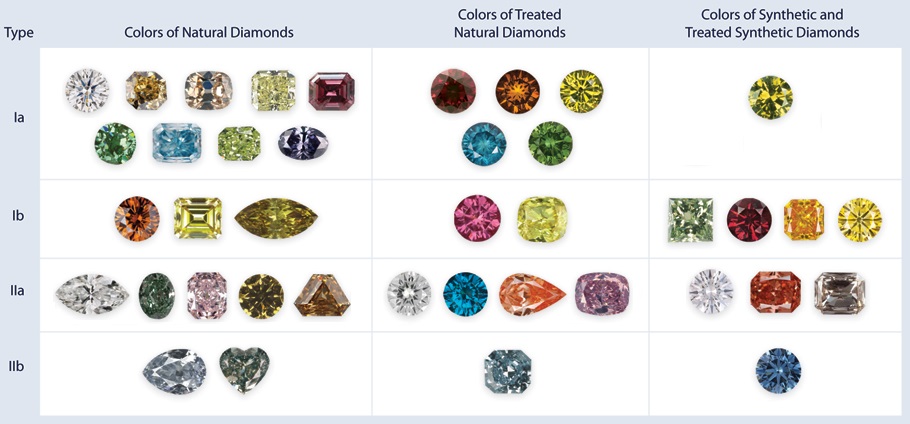
The chart above depicts the visual appearances of type I and type II diamonds.
In an ideal world, pure diamond is made of only 1 element: carbon. In reality, pure diamond rarely exists because their natural formation process takes place in different geologic and turbulent environments deep within the Earth.
As a result, there are often chemical impurities found in a diamond’s chemical composition. Basically, diamond types are a scientific method of categorizing diamonds based on their physical properties and the type of chemical impurities they have.
This can be helpful when it comes to helping gemologists differentiate between natural, lab grown and treated diamonds.
Types of Diamonds – What You Need to Know
Technically speaking, there are 2 categories that are used to classify a diamond: type I (contains nitrogen impurities) and type II (without nitrogen impurities).
Within these categories, they can be further broken down into 5 sub-categories: Type 1a, Type 1b, Type 1aB ,Type 2a, and Type 2b. Here is an illustration to show you the differences in chemical composition across the different diamond types.
Type Ia Diamonds
Type Ia diamonds contain clustered nitrogen atoms and they are estimated to make up 95% of the world’s natural diamonds. It should come as no surprise as nitrogen is the most abundant element in our atmosphere and they find their way into the diamond’s composition during formation.
Type 1a diamonds can vary in a range of colors from near-colorless to being lightly colored (having more traces of nitrogen). However, they are predominantly yellowish in tint because of the nitrogen composition. These diamonds also tend to display blue fluorescence.
It’s worth noting that 1a diamonds can be further divided into 2 subcategories: IaA and IaB. This is basically a distinction of nitrogen atoms that form in pairs or fours which also affects the color hue of the diamond.
Type Ib Diamonds
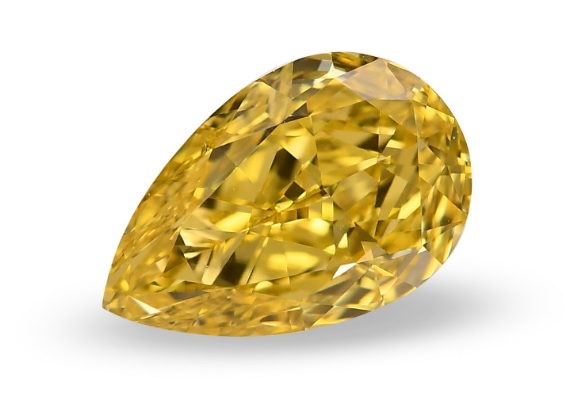
GIA certified 0.59 carat, fancy vivid yellow diamond from Leibish.
Type Ib diamonds are extremely rare and make up less than 0.1% of natural diamonds. Similar to Type 1a diamonds, they also contain traces of nitrogen in their crystal lattice.
The difference is that the nitrogen atoms are scattered and isolated instead of being clustered together. Due to this configuration of the crystal lattice, type 1b diamonds tend to have intense color hues like yellow (canary), orange or brown.
Type IIa Diamonds
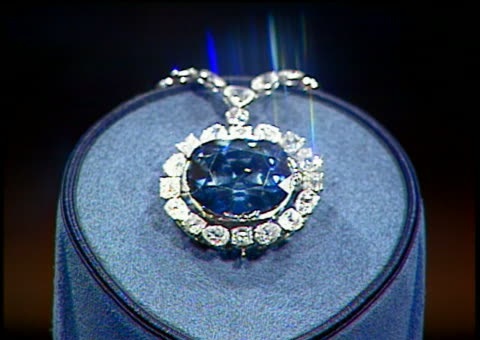
The world famous Hope Diamond is a type IIa diamond.
Type IIa diamonds contain almost no measurable impurities (no nitrogen or boron) and make up roughly 1% of all-natural diamonds. Among the different types of diamonds, type IIa stones are chemically the purest and highly sought after by investors.
In the trade, they are sometimes referred to as “Golconda diamonds” and are known for their D color, no fluorescence and high clarity ratings. Some of the most famous diamonds in the world like the Cullinan and De Beer Millennium Star are examples of type IIa diamonds.
While most type IIa diamonds are colorless, they can also be yellow, pink, red or even blue. And unlike a type 1 diamond where the color tint comes from Nitrogen or Boron, type IIa diamonds get their color from plastic deformation of its crystal lattice during their formation process.
Type IIb Diamonds
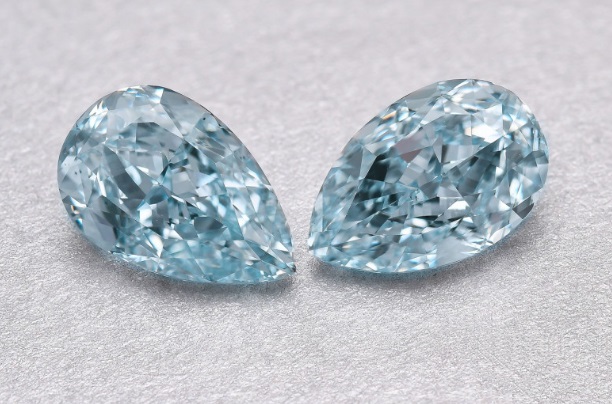
Pair of greenish-blue GIA certified diamonds sold at a value of $1.2 million dollars – Leibish.
Type IIb diamonds are some of the rarest and most intriguing diamonds in the world. Less than 0.1% of natural diamonds belong to this category and they only contain Boron impurities (and no Nitrogen) in their composition.
Due to the presence of Boron, the physical characteristics of the diamond are changed and they typically result in blue, gray color hues which makes them highly sought after by collectors.
The Boron impurities also result in type IIb diamonds being electrically conductive where they normally don’t when carbon atom forms covalent bonds in a diamond. Type IIb diamonds can also exhibit blue or red phosphorescence.
Type 1 vs Type 2 Diamonds: Which is Better?
As a casual consumer, most diamonds you will come across in the market will be type 1a diamonds. But the fact of the matter is that the technical classification of diamond types won’t matter much to you.
Whether you want to buy a D/IF diamond or a more budget-friendly H/SI1 diamond, it is more important to pay more attention to the 4Cs. That is because the diamond type classification doesn’t tell you the stone’s light performance, inclusions, or how it looks like.
Even if you are looking to buy a fancy color diamond, what is most important is that you buy one that visually appeals to your taste and has a reliable GIA grading report. For example, if you are buying a natural blue diamond (which would usually fall into the type IIb classification), you should be more concerned about its origins and color distribution.
If you are looking for a diamond engagement ring, your priorities would be balancing the 4Cs with a predetermined budget and having tangible information like videos/scope images to help you make an assessment.
James Allen and White Flash are 2 vendors that I highly recommend as they excel in these aspects.
Are There Any Other Different Types of Diamonds?

Different types of lab created fancy color diamonds available at Brilliant Earth.
From a gemological standpoint, the different diamond types can get really technical. The important thing to note is that most shoppers/jewelers classify the various types of diamonds with slightly different definitions and lingo:
• Natural diamonds – the standard type of diamond that is naturally created and mined from the ground. This would refer to the majority of white diamonds you would find in retail stores.
• Treated diamonds – these are usually natural diamonds that start out with very poor color and/or clarity characteristics. They are artificially enhanced to look better via processes like fracture filling, laser drilling or HPHT color treatments to make them saleable.
• Natural colored diamonds – they come in almost every imaginable color and account for a very small percentage of the world’s diamond production. The rarest and most sought after colors are pink, blue, red and orange which can command eye-popping prices.
• Man-made diamonds – these are created on a commercial scale in the laboratory and has gained traction with consumers in recent years because of their affordability. They can come in a variety of carat sizes and different color hues.
A Quick Wrap Up: Different Kinds of Diamonds
I hope this article has helped you gain a deeper understanding of diamonds and why the different diamond types possess certain properties. To be sure, there has been a lot of technical information to take in while reading this write up.
However, you shouldn’t let this scare you off from purchasing a diamond unless you are looking for something with a very specific trait. For the vast majority of consumers who are simply looking for an engagement ring, very little of this affects the process of choosing a beautiful looking diamond.
On a final note, buying a diamond is not something that you want to jump into without doing due diligence. It takes careful planning and a lot of time to find the right type and style.
If you have any further questions or need help with a diamond selection, feel free to drop a comment or get in touch via email. I will be glad to offer my advice.
Related Articles
Leave A Comment

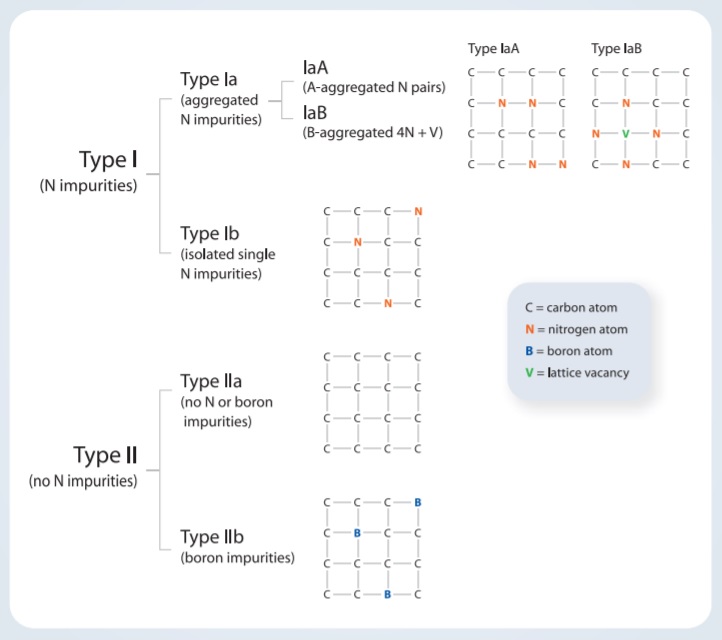
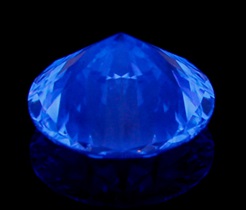

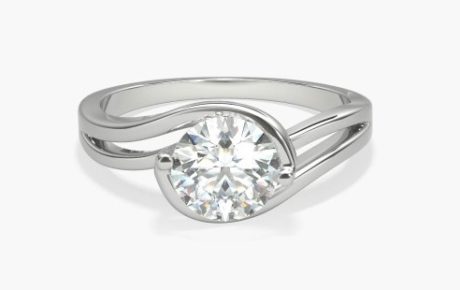
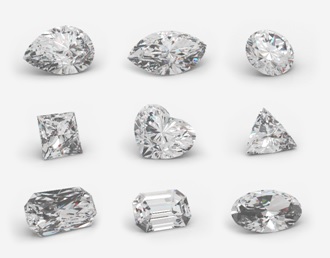









4 Comments
Do you have a ballpark figure or price guide that shows the different values between type 1 vs type 2 diamonds?
For type 1a diamonds, you can actually get a feel of how the prices vary across the 4Cs by comparing them to the inventory of retailers like Blue Nile and James Allen. These are highly competitive vendors that offer some of the lowest prices in the world and you can get a practical idea on whether a diamond is relatively cheap or expensive.
I’ve detailed a methodology here: https://beyond4cs.com/diamond-prices/
As for type 1b, type 2a and type 2b, the value of a diamond would depend on the color, carat weight, clarity it has. There are no hard and fast rules but instead, pricing is like art here due to the ultra-small volume of these stones. For example, a 0.3 carat blue diamond with type 2 classification can cost significantly more than a 2-carat type 1b, D color, internally flawless diamond. This is due to the relative rarity as well as the demand for blue diamonds.
Do you have an idea of what the Tacori rings are priced at? Those that I had seen typically cost between $2000 and $6000 which makes them pretty expensive. Are there similar alternatives that are more affordable?
If you want a ring that looks exactly like Tacori’s settings, then you would have to pay the premium for the branding. Sure, there are other alternatives with 3 stone ring designs but the key feature that you will not see in other rings is their crescent motifs.
If you love the design, then go for a Tacori setting. It’s worth it in my opinion to get something unique and their prices aren’t that expensive when you look at the kind of detailing and craftsmanship that goes into these rings. You also got to bear in mind that there is no straightforward way to craft these rings or mass produce them with molds. There’s a lot of man-hours required to work on the pieces and this will be reflected in the prices.